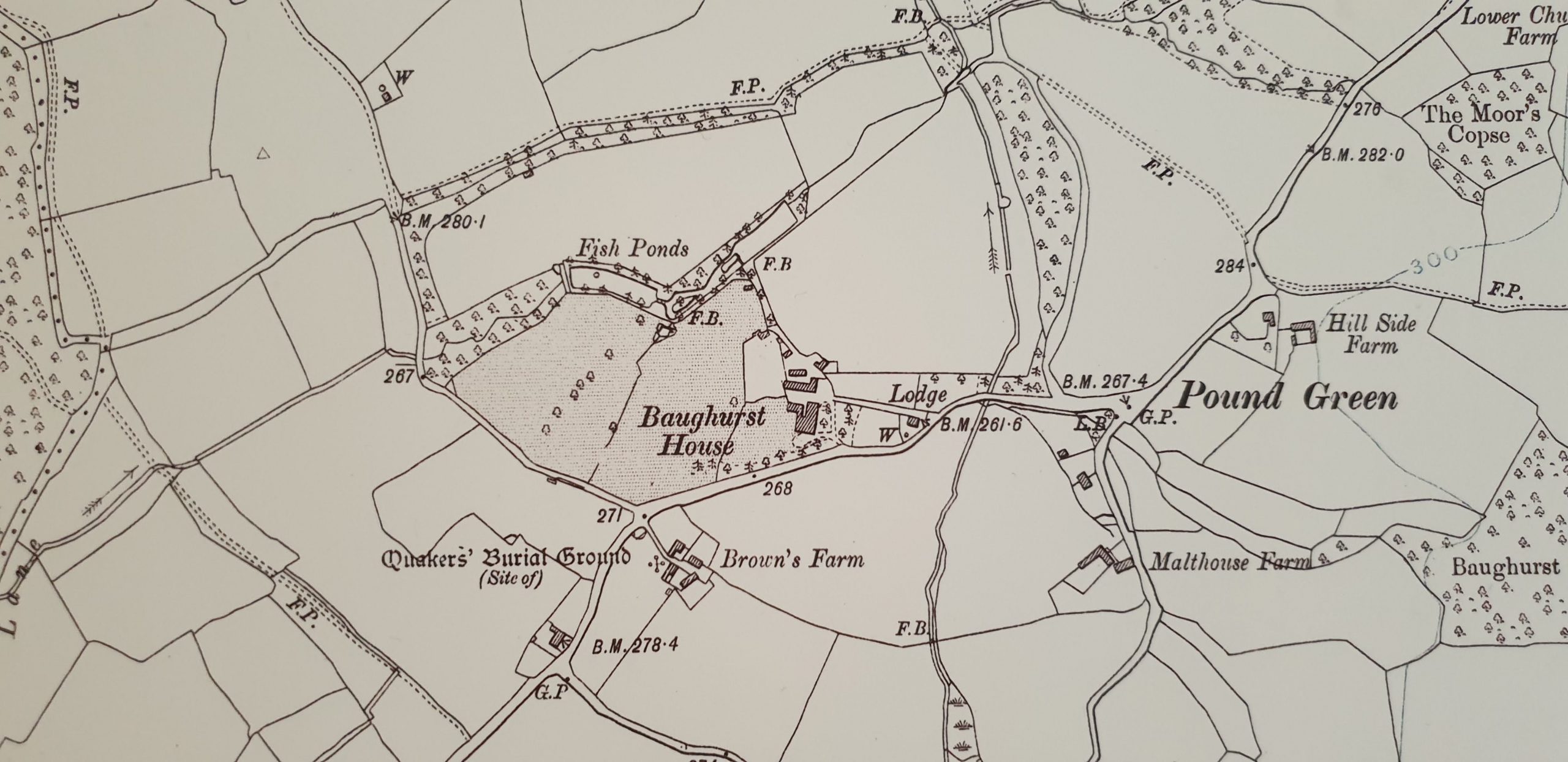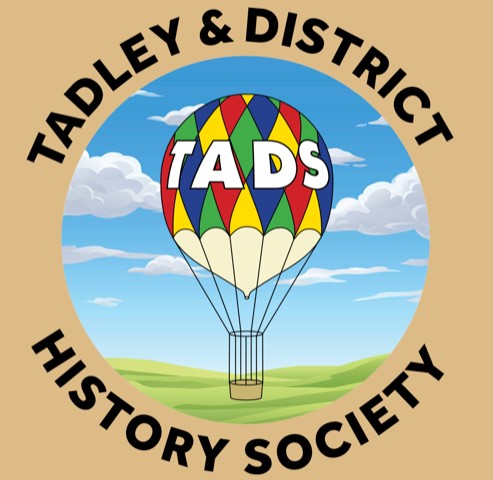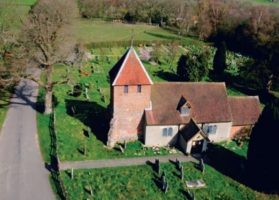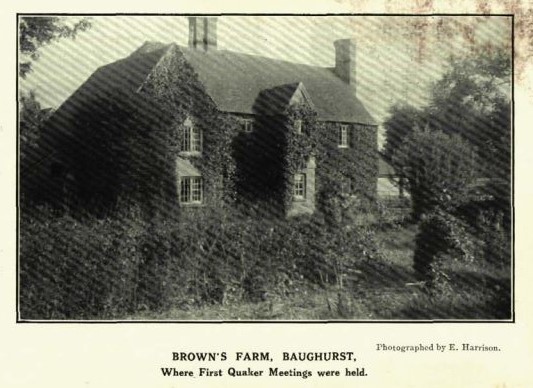During the Civil War Baughurst saw local skirmishes and suffered from plundering. After this it became one of the biggest and wealthiest Quaker centres in Southern England. Following a visit in 1657 to Basingstoke by George Fox, the Quaker founder, James Potter of Baughurst went to prison for standing up in Baughurst Church and reading a Friends’ paper which conflicted with established church thinking. When released, Potter established a Quaker meeting house at Browns Farm (and later at Baughurst House) and soon conducted burials in the garden at Browns Farm. The Toleration Act of 1689 reduced the importance of Baughurst to the Quakers however; some joined the Anglicans whilst many joined the Methodists John and Charles Wesley and their friend George Whitfield, who lived in Baughurst for some time around 1736. [2]

THE QUAKER BURIAL GROUNDS AT BAUGHURST [1]
BY FLORENCE A. G. DAVIDSON
It was not long after George Fox, the founder of the Community of Friends, began his active ministry, in 1648, that we begin to find traces of his teaching in many parts of Hampshire. His followers were at first few in number, and this new religion was so persecuted and proscribed that its members had to conduct their meetings in secrecy; and it is owing to this fact that so many details of their early discipleship have been lost sight of and tradition concerning them died out of the County.
To-day all trace of the Quakers has died out of the villages round about, but in Baughurst we still find many traces of them. The Community here, at the end of 1600, seems to have been a rather large and also an influential one and included members from Kingsclere, Aldermaston, Sherfield, Tadley, Itchingswell, &c. Mr. Richard Potter, who lived in what is known as Brown’s Farm (now forming part of the Baughurst House estate) was one of their leading members, together with Mr. John Harris, of Baughurst House, who had married one of Mr. Potter’s family. Mr. Potter greatly enlarged and added to the farm house from a still older one on the same site, and it stands to-day practically the same now as then. On the central gable is the date 1693, and the initials R. P. M. for Richard and Mary Potter, his wife ; while A. N. for Ann Potter is on the south chimney.
It was in a room under the roof of this house that the first Quaker Meetings are always said to have been held; and as the first Quaker burial in the Parish of which we have any record was in 1663, these Meetings must have been held before this time. BROWN’S FARM, BAUGHURST, Where First Quaker Meetings were held. These .Meetings had to be held very privately as they were stopped at once if heard of, though the Quakers were no cowards and made no secret of what they professed, but they did not want to expose their families to persecution.
If people were found at these Meetings and refused to take the oath of allegiance to the Established Church, they were imprisoned or fined. We have numerous accounts in the County of these fines and imprisonments, and of the emigration to America of this persecuted sect. The first burial of a Quaker (entered in the parish register as such) was that of Elizabeth Kent, of Tadley, in 2nd month (April) 23, 1663 ” Buried in the Quaker Burial Ground.”
Tradition has always pointed out a part of the garden at Brown’s Farm as one of the Quaker burial places; this was measured in 1893 by Mr. C. J. Stevens and found to be 14 yards by 7 yards and is still in grass—about 3 poles, in all, but it may have been larger formerly. The last entry of a Quaker burial in the ” Quakers’ Burial Ground ” was in 1791. The burial of Elizabeth Kent was followed by that of Mary Bulluck (born at Alton) and buried here 26 May, 1665. These burials were followed by many more in this same century, very many taking place the day after death.
In 1685, from the 1st of May to the 7th of November there were six burials, two of them, those of Mary Burgis and Andrew Person, taking place the same day—July 20th. The last burial in the parish noted as taking place in the Quaker Burial Ground was that of Mary Barlow on the 9th of the n t h month (November), 1791, and 71 burials in all are on record as having taken place between the years 1663 and 1791.
The entries of these burials are to be found in the Registers of the Parish and in the Registers of Burials of the General Meeting of Dorsetshire and Hampshire at Southampton, all Old style. The year commenced in March and was known as the legal year. This ” s t y l e ” was used till 1757, after which date the year was counted from January 1st. Non-parochial Registers having to be surrendered, to the Crown Commissioners by Act 3 and 4, Victoria, cap.r’92.
The traditional burial ground in the garden of Brown’s Farm (Richard Potter’s old home) is, and always has been, a grass-grown part of the regular garden, with an old.yew tree and shrubs in it. It lies next the division hedge on the ‘*- Baughurst and Newbury road. Confirmation of this being an old burial place has been the discovery of a bricked vault, by the present occupier, who dug to see if he could find traces of burial here. And there is an entry in the parish register on November 26th, 1742, which further confirms the fact of burial in the farm grounds : Ann Potter, a Quaker, was buried ” in her brother’s garden.” This may have been the grave she was buried in.
In the parish register are the entry of various irregular burials from the year 1726. This year was buried in ” ye place called ye Quakers’ Burial Place ” Peter Hine, a Quaker, and we are told that he was buried in woollen. There are sixteen burials of this kind in the register, but they are all entered irregularly and in batches, which shows that they were entered at the convenience of the rectors; and as many at this period were non-resident, it is not likely to be a perfect list. In 1759 William Blunden, a Quaker, was buried. Under his name is written ” The strong man of Baughurst.” Mr. Stevens in his notes tells us that even in 1892 the tradition of this strong man was preserved in the village. On one occasion he was challenged to fight by a boaster, who relied on his being a Quaker to ignore the insult. For all answer Blunden simply took hold of the man and tossed him over the nearest hedge.
Richard Potter died in 1747 (8 ?) and was buried on ” Monthly Meeting ” at Baughurst. There is no other entry in the parish register to show that any other burial took place in this garden burial ground, but the Register of General Meeting quoted before only says the burial ” took place in Baughurst •’ and does not mention any place in particular. But as members of the Community were buried in the parish before 1700, some of them, especially if they were members of the Potter and Harris families, may well have been buried .in the same ground that Ann Potter lies in. From the beginning .Friends had a separate burial ground, and burials
in private property, before the Act was passed to prevent this, were very common all over England. In 1727 we have deeds to prove that the active persecution of the Society of Friends as a body had died down, as at that time they bought a burial ground from John Harris, senior, as evidently the older one had become too overcrowded. John Harris lived at Baughurst House, which he built in 1693. His wife was Mary Potter, said to be a daughter or sister of Richard Potter, and the initials of M. P. and J. H. are still to be seen on the central gable of their house. The original deeds of this purchase says that this site for a burial ground was near the Quakers’ old Meeting House. As all trace of this has long ago gone, it is impossible to identify the spot where it stood.
Tradition again points out that the first Meeting House was close to Richard Potter’s Farm in a meadow where the stables
now stand. In the same year, on February 17th, there is a conveyance of land to trustees for the use of the Society of Friends in Baughurst, by Leonard Cole, a Quaker, for the purpose of building a Meeting House. The land conveyed is described as a parcel of land purchased by Leonard Coale, or Cole, from Richard Freeborn, containing about 15 poles (more or less) bounded on the east by a ditch adjoining the highway leading from Baughurst to Newbury, on the north by lands called Wildery Key.and on west and south by land owned by Leonard Coale. The outward walls of the Meeting House were to be a foot within the land bought.
This land was left in trust for the people commonly called Quakers, to build a Meeting House for the aforesaid Quakers and for burying their dead. This land was to be used for no other purpose whatever, and the Trustees were to be all Quakers. The names include” those of Sanders, Kirton, Froud (of Aldermaston), who were all buried in the burial ground in later years. . The next conveyance is dated April 2nd, 1735, and conveys a piece of land from Leonard Coale for another burial ground.
The trust is vested in the same trustees, and it appears; to be a piece of land running from north to south, behind the-Meeting House, and it was to be fenced in. In this deed Mr. Coale speaks of the new Meeting House as built and buildings that have been erected near it since the gift of land in 1727. No doubt this last gift of land was to prevent encroachments being made on the land conveyed to the trustees where the Meeting House stood and also to provide more room for burial as the Community of Friends here now numbered a good many people.
In 1676 we find, from Bishop Compton’s Census of Canterbury (Salt Library at Stafford), that there were 19 Nonconformists in the parish against 154 Conformists, a good number for so small a place at that time ; these must, of course, have been Quakers, and with the members from the villages round about the Community comprised a good many persons. Under these circumstances a larger burial ground would be required. A special clause in the Deed requires that at no time hereafter are trees to be planted on this land used as a burial ground that might injure the land belonging to Mr. Coale which joined it.
With these deeds we have a note in Mr. Coale’s writing of the money to be paid for making the burial ground in 1735. On the outside is this crude sketch of rather later date than the deed itself as is seen from the different style or writing to that inside the paper. Sketch on outside of Deed—
The charges for making the burial ground come to £iy 14s. 9$d., of which £14 5s. 6d. was subscribed by and given to the trustees, and £3 9s. 3$d. extra, which was given by Mr.vGpale to make up the amount. The burial ground at • :’tMt jtime was carefully drained, and a brick wall put round ;Mt with’ar wooden gate as entrance, and the hedges planted. There is also a sum of four shillings paid ” For the setting up of ye little house,” which may have been a shed for the
gravedigger’s tools. Mr. John Harris’s will, which was proved, in 1736, -has this “clause in i t : ” I give my son my little meadow at Townsend and.after his death I give the same for the use and behoof of the People commonly called Quakers belonging to the Meeting of Baughurst and Brimpton for a burying ground for ever.”
John Harris, who’ inherited this meadow with the rest of the Baughurst House estate, died in 1770, but we have no hint’ given in the register as to whether he was buried in this meadow that was to be used as a burial place after his death or not. This piece of land is now attached to a house which stands opposite Wolverton Park gates and is the property “of the Duke of Wellington. In digging in it, vaults, &c, have been found by the Duke of Wellington’s agent, which
proves that it had been used for burials at one time.
Perhaps it had been used as a place of burial by the family of Harris. The parish registers show that members of the same Quaker families lived here for many years. The Harris’s were landowners and lived here from about 1700 to late in 1790. -The Potters lived here for the same length of time, while the names of Blunden, Burgis, Haskins. Kirten, South, Spencer, Paice, Froud, &c.,.occur often in the 128 years of which we have record of burials in the Quaker Burial Place. One curious entry is found in the register of Quaker interments. ” Mary Bullick, daughter of Thomas and Mary Bullick, buried March 25, 1665, at Bramshott. Buried contrary to the wish of her parents in the Mass House yard so called.”
It seems impossible at this date to find out the exact place where the Meeting House stood and where the burial, ground was that Mr. Leonard Coale and Mr. John Harris gave to the. Community. But local tradition has always pointed out the meadow where the present stables stand to the right of the short road that leads to Brown’s Farm from the high road, but there is nothing to verify this, as no digging seem to have taken place here; it is, and always has been, grassland. Dr. Samuel Andrews, formerly ofBasingstoke, who has taken a great interest in these Quaker Burial Places, pointed out the fact of there having been interments in the garden at Brown’s Farm to the revisors of the Ordnance Survey, and they have accordingly put a note on the map of Baughurst of ” Old Burial Ground,” so that it may be preserved from being built over.
Brown’s Farm (so called from a family of that nanie who lived there for very many years) is an interesting old house both.inside and out, and the rooms under the roof remain almost unaltered since the days when the first Meetings were held in them.
There is a local idea in the parish that one of the Burial Places and the Meeting House built early in 1700, were on the site where a cottage and garden now stands on the Baughurst and Newbury road not far from the Methodist Chapel, and the spot is still shown in the garden where a coffin was found some years ago, but at present we have no confirmation of this idea. I wish to express my indebtedness to Dr. Samuel Andrews for all the kind assistance that he has given me in my researches for this article.2
It is exceedingly difficult to trace Burial Grounds formerly belonging to the Quakers, because they disapproved of tombstones, monuments, etc. Burn, Hist. Par. Regs., 2nd edition, 234.
References
[1] Papers and Proceedings – Volume 7 – Page 40 Hampshire Field Club and Archaeological Society 1914 (Southampton, England) [2] Baughurst Parish council website [3] 1913 OS Map Surveyed 1871-1872 Revised 1907


